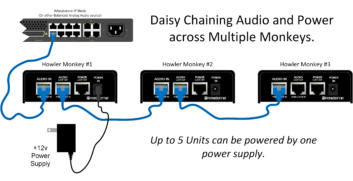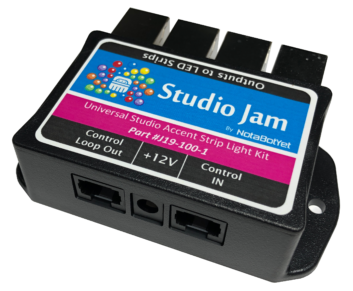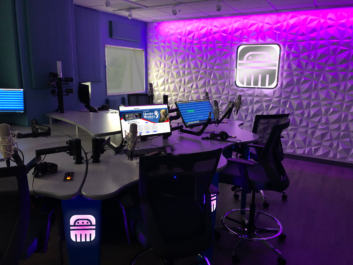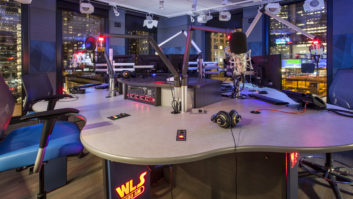
Every now and then we are fortunate in our industry that a startup crops up to bring us some really cool problem-solvers. Some of these firms come and go. Some products are acquired by other companies (the old Dannager Audio Works Plan B silence sensor comes to mind). Some suppliers become industry stalwarts.
We have long-standing manufacturers like Henry Engineering and RDL that have built special widgets for years. Relative newcomer Angry Audio has a growing variety of solutions.
Now a company called NotaBotYet is on the scene with its own line of creative products for radio broadcasters. The startup was founded by wife-and-husband team Thresa and Michael Gay.
[Check Out More Product Evaluations in Our Products Section]
Early glimmers came while Michael was helping his daughter build her first robot, named the C-Bot, and trying to come up with a cute name to put on the circuit board. Because this was just the foundation of the project, he wrote “NotaBotYet” on the board.
Fast forward about six months to a studio build when one of Michael’s engineering colleagues spent days, literally, days, soldering 15-pin connectors for an Axia node. Michael thought, “There has to be a better way.” So he worked out some circuit board designs, and put the “NotaBotYet” name on them again.
That little breakout board was noticed by Dave Kerstin of distributor Broadcasters General Store, who said, “Hey I could probably sell a lot of those! Think you can make more?”
Thus in 2015, NotaBotYet was born.
Thresa is president of the family firm. “My degree is in education. I’m a mom, which qualifies for doing just about any job on the fly. For our company, I was in a position that I could balance starting a company — finances, sales, management — with home life — finances, sales, management.”

Michael’s day job is vice president of engineering for Cumulus Media, but in his spare time he is the product designer for NotaBotYet. And their teenage daughters Tesla and Cianna help out.
Tesla, the 16-year-old, loves technology and has built her own gaming computer. (“Yes, she was named after Nikola Tesla,” said Thresa Gay. “I did marry a radio engineer. She was named Tesla before Tesla was cool.”)
Sample work
NotaBotYet makes a bunch of cost-effective solutions to resolve radio installation quandaries. They include the NotaBotYet Axia Relay, Axia GPIO Breakout, Six-Channel WheatNet Logic or Axia Livewire GPIO Relay, Yellowtec LITT Signaling Device Interface, Easy Relay, On-Air 85, Tally Helper 100 & 500, the Howler Monkey Precision Studio Headphone Amp and the Studio Jam and Expansion Jam.

They’ve also built clever mounts for installing video cameras in radio studios.
Consider the Howler Monkey Headphone Amp system. It is designed to mount around the studio at guest locations; it uses standard RJ45 connectors and Ethernet cables. (And why is it called “Howler Monkey”? Because the howler monkeys of Central and South America are among the loudest creatures on land.)
It’s so well built and designed, I had to open the case to check out the construction. These headphone amp boxes have both 1/4-inch stereo and mini headphone jack, so no adapters to hunt down. You can daisy chain five of these (so you don’t need five “wall wart” power supplies all over) and you can chain the audio via Cat-5 from one to the next, or feed them individually from your analog DA, Blade or Node. Retail price is $320.

Then there’s the Studio Jam, a fun device that can be used to create cool lighting effects in the studio based on GPIO connections from your audio board or AoIP gear.
These days, with studios “on camera” via social media and video streaming, an “ugly studio” won’t do. So NotaBotYet created this box to help add multicolor accent lighting around the studio in an inexpensive and creative way. Use it to cause lighting in the room to change color, depending on a GPIO trigger. Maybe the highlights glow red during an EAS! Or as various guest mics open, maybe the room — or even just the boom arms — might change color. Retail price is $340.
Another slick device worth mentioning is the On-Air 85, a universal 12V On-Air light that can be controlled by the Axia, Wheatstone or generic GPIO system.
Unlike more traditional on-air notification systems, this very small device provides the power to your 12V on-air light. It simplifies the wiring and connection to an output of the GPIO to the On-Air 85, and the On-Air 85 to the light. Simple and safe, avoiding any 120V AC wiring, and using easy low-voltage wiring.

Besides the “Steady On” mode, there are 14 flashing patterns you can choose, so this device can certainly be used as the interface for a “phone” GPIO, “door” GPIO, or even “Coffee is READY!” GPIO. Retail price is $140.
Keep your eye on NotaBotYet for more creative ideas. Check out what they have, and if there is something you need, tell them. They’re open to helping you meet that need for the tough-to-solve problem.
The website is www.notabotyet.com and includes a list of its U.S. and international dealers.
The author is chief video engineer for the Cleveland Orchestra and a veteran radio and TV engineer. He wrote about the Elgato Stream Deck in January.





